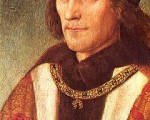
How much do you know about the Tudor and Plantagenet dynasties? Check your knowledge with this fun quiz on these kings and queens.
[Read More...]
How much do you know about the Tudor and Plantagenet dynasties? Check your knowledge with this fun quiz on these kings and queens.
[Read More...]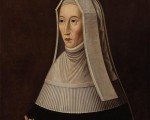
Margaret Beaufort, Countess of Richmond and Derby, and matriarch of the Tudor dynasty, was born at Bletsoe Castle in Bedfordshire on 31st May 1443. She was the daughter of Margaret Beauchamp of Bletsoe and John Beaufort, 1st Duke of Somerset, grandson of John of Gaunt, 1st Duke of Lancaster, and his mistress (and eventual wife) Katherine Swynford. Margaret was their only child. Although a 1397 act of Parliament legitimized the children of John of Gaunt and Katherine Swynford, Henry IV declared that they could never inherit the throne.
[Read More...]
Here is the transcript from last night’s live chat in the chatroom with Claire Ridgway. Thanks to all those who attended!
[Read More...]
Just a reminder that Claire Ridgway will be in the chatroom tonight (29th May) to answer questions on her recent talk on Thomas Cromwell, Henry VIII and the Fall of Anne Boleyn, or anything you want to ask her. The chat will be at midnight UK time on Friday, which works out as 1am Central European time on Saturday, 7pm in New York on Friday, 4pm in Los Angeles on Friday and 9am on Saturday in Sydney.
[Read More...]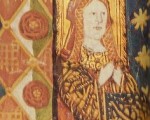
I’m busy researching Tudor entertainment, revels and pageantry at the moment and so wanted to share with you some information on the 1511 celebrations for the birth of Prince Henry, Duke of Cornwall. I hope you enjoy these vivid descriptions which might just transport you back to early 1511.
[Read More...]
Here’s the latest magazine with all our regular items and contributors plus lots of fascinating articles about people and places from the Tudor period.
[Read More...]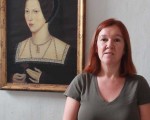
In this month’s second expert talk, Claire Ridgway looks at the fall of Anne Boleyn in 1536 and examines the roles of Thomas Cromwell and Henry VIII in those bloody events. Did Thomas Cromwell plot all by himself or was he simply his master’s servant? Was Henry VIII ultimately responsible? Why did Anne Boleyn have to die?
[Read More...]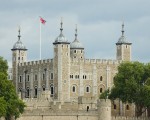
The Tower of London, or Her Majesty’s Royal Palace and Fortress, as it is officially called, is famous for being the site of much bloodshed and for being the prison of many hundreds, if not thousands, of people since it was first built, but how much do you know about it.
[Read More...]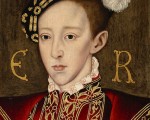
Edward VI was born on 12 October 1537 at Hampton Court Palace. He was the son of Henry VIII and his third wife Jane Seymour, who died twelve days after giving birth to him, probably of puerperal fever. He was tutored by scholars such as John Cheke, Richard Cox, Roger Ascham and Jean Belmain, and it appears that he was an intelligent child. By the age of twelve he was undertaking work on religious issues and controversies and had written a treatise about the Pope being the Antichrist.
Henry VIII, died on 28th January 1547, making Edward King Edward VI of England. Edward was only nine years old and far too young to rule over the country himself so a Council of Regency was set up, according to Henry VIII’s will. Sixteen executors had been named by Henry to act as a regency council until Edward came of age. The council members had been appointed as equals, but Edward’s uncle, Edward Seymour, took the lead and became Lord Protector of the Realm. Seymour was not content with just being Lord Protector, by 1547 he had convinced the young King to sign letters patent giving him the right to appoint members of his choosing to the Privy Council and to only consult them when he himself chose to.
[Read More...]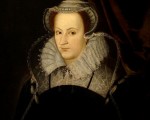
Mary, Queen of Scots, was born at Linlithgow Palace in Scotland on 8th December 1542. She was the daughter of James V of Scotland and his second wife, Mary of Guise, and the granddaughter of Margaret Tudor (Henry VIII’s sister) and James IV of Scotland. On the 14th December, when she was just six days old, Mary became Queen of Scotland after her father died of a fever. She was crowned Queen on 9th September 1543 at Stirling Castle. As Mary was a baby, James Hamilton, 2nd Earl of Arran, acted as regent until 1554 when he surrendered the regency to Mary’s mother, Mary of Guise, who acted as regent until her death in 1560.
[Read More...]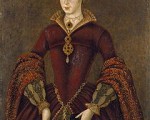
Queen Jane, commonly known as Lady Jane Grey, was born in 1537 (May or October) at Bradgate Park in Leicestershire. She was the eldest daughter of Henry Grey, Duke of Suffolk and Frances Brandon, daughter of Charles Brandon, Duke of Suffolk, and Mary Tudor, Queen of France. She was an intelligent girl and received a top-class education. Her main tutor was John Aylmer but she also met the top scholars of the day during her time living with Thomas Seymour, as his ward, and his wife Dowager Queen Catherine Parr. She also met famous reformists and humanists. She loved Greek and was a linguist with a knowledge of Latin and Hebrew, on top of the usual modern languages.
[Read More...]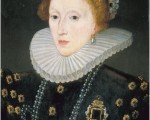
Elizabeth I was born on 7 September 1533 at Greenwich Palace. She was the daughter of Henry VIII and his second wife Anne Boleyn. Her mother was executed for alleged adultery and treason in May 1536 and within two months of her mother’s death Parliament had confirmed that Elizabeth’s parents’ marriage was invalid and that Elizabeth was illegitimate.
In 1547, following her father’s death, Elizabeth moved in with her stepmother the Dowager Queen Catherine Parr, and her husband Thomas Seymour. There, she became involved in a scandal with Seymour, who would visit Elizabeth’s chamber, dressed only in his night-gown, and proceed to tickle and stroke the teenaged girl. Eventually, Catherine arranged for Elizabeth to go and live with her good friends, Sir Anthony Denny and his wife at Cheshunt. Catherine died in September 1548, following the birth of her daughter, and Seymour was executed in March 1549 for allegedly plotting to control his nephew Edward VI and to remove his brother, Edward Seymour, Lord Protector, from power.
[Read More...]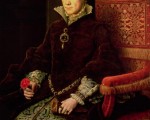
Mary was born on 18 February 1516 at Greenwich Palace and was the daughter of Henry VIII and his first wife Catherine of Aragon. She was an intelligent girl, was known as a linguist and loved music and dancing. Mary was made illegitimate and removed from the succession after the annulment of her father’s marriage to Catherine of Aragon in 1533 and the subsequent birth of her half-sister Elizabeth, daughter of Henry VIII and Anne Boleyn. She and Elizabeth (who had been removed from the succession in 1536 after the fall of her mother) were restored to the line of succession, after their half-brother Edward, by Parliament in 1543 but Edward VI chose to remove his half-sisters from the succession as he lay dying in 1553 and chose Lady Jane Grey as his heir. Mary was forced to fight for the throne and was proclaimed queen on 19 July 1553.
[Read More...]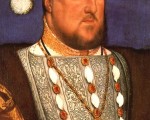
Henry VIII was born on 28 June 1491 at Greenwich Palace. He was the second son of Henry VII and Elizabeth of York, but became heir to the throne when his brother Arthur died in 1502. He inherited the throne on the death of his father in April 1509, when he was just 17 years old, and he was crowned on 24 June 1509 in a joint coronation with his new bride Catherine of Aragon, the widow of his brother.
His reign was seen as the start of a new era, after his father’s harsh regime, and Henry was very much a Renaissance prince at the start, with his charm, good looks, intelligence, love of sport and desire to fight bribery and corruption. However, he has gone down in history as a larger than life, hulk of a man who had six wives and who executed two of them, and who, according to one contemporary source, executed 72,000 during his reign. His reign is famous for the break with Rome which happened as a result of Henry VIII’s “Great Matter”, his quest for an annulment of his marriage to his first wife Catherine of Aragon. Catherine had been unable to provide Henry with a living son and Henry had come to view the marriage as contrary to God’s laws, since Catherine was his brother’s widow. He had also fallen in love with Anne Boleyn. The Pope refused to grant Henry an annulment, but Henry took matters into his own hands after reading that kings and princes were only answerable to God. The marriage was annulled in 1533, Henry VIII married Anne Boleyn and the Reformation Parliament of 1529-1536 passed the main pieces of legislation which led to the break with Rome and the English Reformation.
[Read More...]
Henry VII, or Henry Tudor, was born on 28 January 1457 at Pembroke Castle and was the son of Edmund Tudor, 1st Earl of Richmond, and Margaret Beaufort. Henry’s paternal grandparents were Owen Tudor (a former page to Henry V) and Catherine of Valois, the widow of Henry V and mother of Henry VI. His maternal grandfather was John Beaufort, 1st Duke of Somerset, and his maternal great-grandfather (John Beaufort, 1st Earl of Somerset) was a son of John of Gaunt, 1st Duke of Lancaster, and his mistress (and later wife), Katherine Swynford. It was from this Beaufort side of the family that Henry VII derived his claim to the throne. Lady Margaret Beaufort was only thirteen years old when Henry was born and she was already a widow, his father having died from the plague three months earlier while imprisoned by Yorkists. Margaret had been taken in by her brother-in-law, Jasper Tudor, Earl of Pembroke, the man who helped bring Henry up, who took him into exile in Brittany and who helped him win the crown of England.
[Read More...]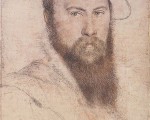
In today’s Claire Chat’s I discuss Wyatt’s words “The bell tower showed me such sight, That in my head sticks day and night” and what he was referring to. Did he see the executions? Did he see Queen Anne Boleyn get beheaded?
[Read More...]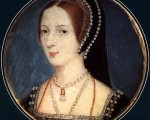
On 29th January 1536, the same day that Katherine of Aragon was laid to rest at Peterborough Abbey (nowadays known as Peterborough Cathedral), Anne Boleyn tragically miscarried. There has been a great deal of speculation surrounding Anne’s final pregnancy and miscarriage. Some have suggested that the foetus was disfigured and malformed while others do not give any hint at anything wrong with the baby. Here is what Eustace Chapuys, ambassador to Charles V at the English Court, had to say about Anne’s miscarriage:
[Read More...]
Thanks for those who were on last night’s live chat with Jessie Child. We had a lot of fun and it felt like we were all sitting around a big table chatting about our favourite subject – the Tudors!
For those that weren’t able to make the chat, don’t worry. Here is the transcript:
[Read More...]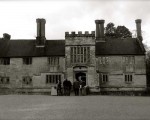
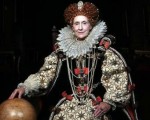
Just to let those of you with access to the UK’s BBC 2 know that Dan Snow’s three part series “Armada – 12 Days to Save England” starts this Sunday (24 May) at 9pm.
[Read More...]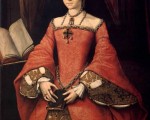
On this day in history, 19th May 1554, the 18th anniversary of her mother Anne Boleyn’s execution at the Tower of London, the future Elizabeth was released from her prison in the Tower of London and placed under house arrest.
Nobody knows what was going through Elizabeth’s mind as she left the Tower on the anniversary of her mother’s execution, but being released from the Tower was not a relief for the young woman as she feared that she was going to be assassinated on her way to Woodstock, where she was going to be placed under house arrest.
[Read More...]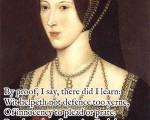
Today is the anniversary of the execution of Anne Boleyn so here are some links to articles and an audio extract for you to enjoy.
[Read More...]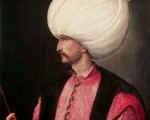
At dawn on 18 May 1565, exactly 450 years ago, watchmen manning Malta’s coastal defences saw an awesome and terrifying sight. Between them and the orb of the rising sun the sea was black with a mighty battle fleet.
[Read More...]
Thank you to Tudor Life magazine contributor Kyra Kramer for this excellent article on Sir Henry Norris, Henry VIII’s Groom of the Stool, and the fall of Anne Boleyn. Over to Kyra…
Of all the men who were falsely accused of being Anne Boleyn’s companions in adultery, to point a finger at Henry Norris makes the most sense in terms of proximity and politics but the least sense in terms of his close relationship with Henry VIII.
If historian Greg Walker is correct in his 2002 proposal that Anne’s downfall was not due to her miscarriage of a male foetus in January of 1536 but instead to some hasty words she said in spring, then Norris was a ready-made target. One day in late April, the queen asked Henry Norris, who was the king’s groom of the stool and engaged to her cousin Madge Shelton, when he planned to wed. Norris hedged that he would wait just a bit longer, which vexed Anne. In her anger she told him he was looking for “dead men’s shoes, for if ought came to the king but good, you would look to have me”. This was a major blunder. It was treason to even think about the death of the king, let alone to talk about whom his queen might marry after his demise. Norris was appalled and Anne knew almost immediately that she had said something dangerous. She sent Norris to her chaplain, John Skyp, to swear that she was a good woman and faithful to the king.
[Read More...]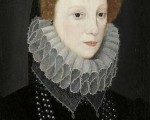
In today’s Claire Chats video I talk about that essential accessory of the Elizabethan era, the ruff, and how it developed over time and how fashions changed.
[Read More...]
Historian Derek Wilson is speaking at the Telegraph Ways With Words Festival of Words and Ideas at Dartington Hall, in Devon, on 10th July.
[Read More...]